With a silky, shimmering longhair coat, Turkish Angora cats are undeniably beautiful and have a mesmerizing allure.
But have you ever wondered about the story behind this unique Asian breed? Where did these captivating creatures originate, and what challenges did they face along their journey to recognition?
In this article, we'll dive into the rich history of Turkish Angora cats, exploring their roots, their near disappearance, and the fascinating efforts that went into preserving this extraordinary breed.
Whether you're an admirer of the Turkish Angora or simply curious about cats, this intriguing tale will take you on a remarkable exploration you won't want to miss.
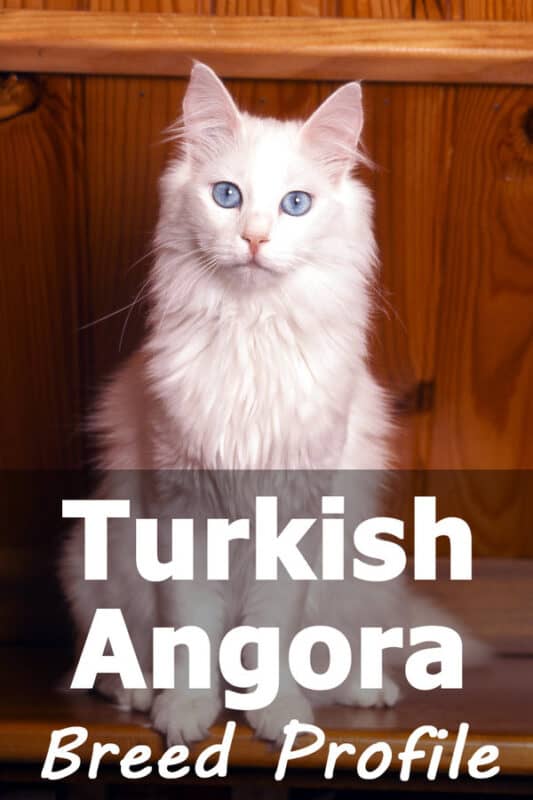
Where did Turkish Angora cats come from?
Here's a short history of this unique Asian breed.
Like all pet cats, Turkish Angoras are the descendants of Felis silvestris lybica, a.k.a. the African wildcat. Scientists believe that all of our kitties - regardless of breed or lack of one - are the offspring of a single "domestication" event.
Turkish Angoras are no exception. They are part of the Felis Catus species and share genetic roots with all other domestic cats.
As the name implies, this breed originated in Turkey. "Angora" is a variation of the name Ankara, the region in eastern Turkey where the breed most likely evolved. Natural selection made a cat with thick long hair that can withstand the harsh winters of that mountainous area.
Reports of the beautiful cats of Ankara go back hundreds of years. We know that they were imported to Britain as early as the 1700s and recognized as a distinct breed.
Fast forward to the 20th century. Cat shows generated what we now call "Cat Fancy" - the deliberate breeding of pedigreed cats. The Persian was one of the first breeds to be included, and Angoras were often brought into breeding programs of Persian cats in order to diversify an otherwise small genetic pool.
The CFA - Cat Fancy Association - claims that the Turkish Angora almost disappeared as a breed around that time, due to extensive "merging" into the Persian breed.
Preserving the Breed: Turkey's Intervention
Turkey was unwilling to lose its national cat so easily. In the early 20th century, the Ankara Zoo set up its own breeding program in an effort to preserve the breed.
Managed by the Turkish government, the zoo collects white Turkish Angora cats, breeds them, and sells them to local families. Exporting one of these felines is complicated, but possible.
The Revival in North America
These local lines were used to bring back the Angora breed in North America in the second half of the 20th century. The Turkish Angora was recognized as a breed in associations in Canada and the US and has regained its status as an independent cat breed.
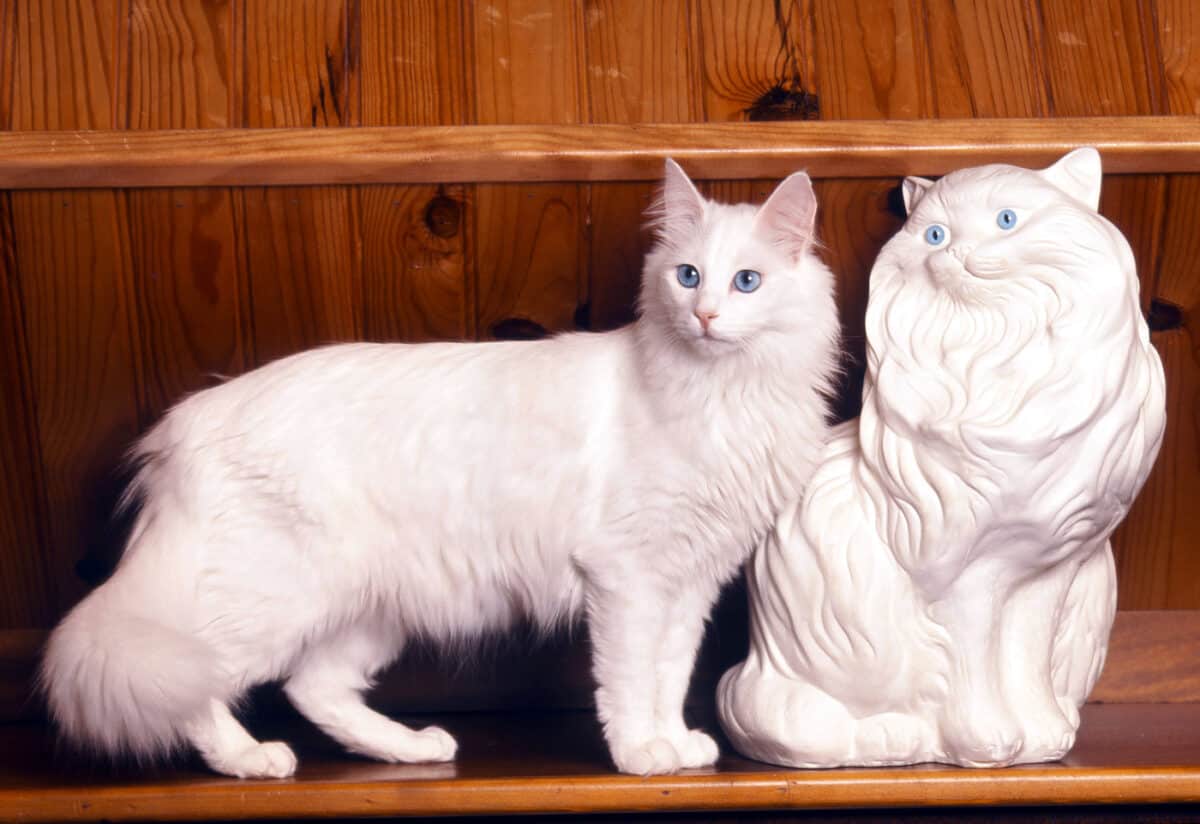
What Does a Turkish Angora Cat Look Like?
These are very elegant-looking felines with distinct features. If you're trying to determine whether a cat is in fact a Turkish Angora, look for the following traits -
- Medium size with a proportionate body structure
- A slightly wedged head shape with a gently rounded - yet firm - chin
- Large pointed ears (often with tufts)
- Large almond-shaped eyes
- A beautiful coat with a silk-like sheen
Many of these gorgeous felines have long coats, but it's not actually a requirement. The breed standard does call for a full-brushed tail and longhaired ruff, but the rest of the cat's body can have a regular shorthaired coat.
Traditionally, the breed had white as the only coat color. This is the only color that's accepted in the authentic Turkish breeding program in Ankara.
However, cat-fancy associations now accept all colors as part of the breed standard. A colorpoint coat pattern isn't allowed, but solid, tabby, bi-colored, and tri-colored cats are welcome in shows.
The eyes of these cats can be green, blue, yellow, copper, or any other eye color. The original Turkish lines bred in Ankara prefer odd-eyed cats, with one blue eye and one yellow.

SIGN UP FOR THECATSITE'S EMAIL UPDATES >
Turkish Angora Cat Personality
While ethical breeders often focus on looks, a cat's personality should not be neglected. The "Turks", as they are fondly called, are considered friendly and easy-going cats. They're usually not shy and approach strangers to check them out.
Generally speaking, these are curious and playful cats that can make a good pet for a family with kids. Of course, as with any other breed, individuals may have their own idiosyncratic traits.
If you're looking to adopt or buy a Turkish Angora cat, talk to the breeder about the kitten's parents and their character, and make sure the kitten is raised at home, around other cats and people.
Where can you get a Turkish Angora kitten or cat?
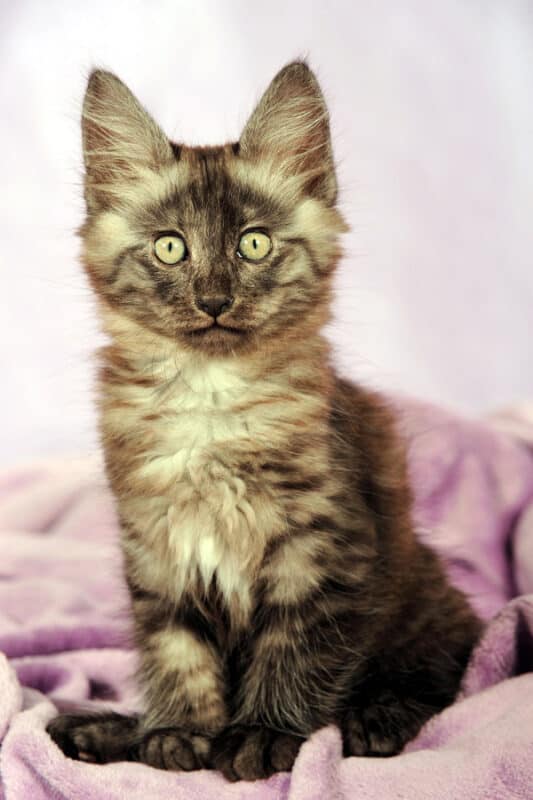
If you want to adopt a Turkish Angora kitten or cat, you'll have to contact a registered breeder.
These cats are fairly rare, so expect to pay thousands of dollars for your kitten. Make sure you buy from an ethical breeder. Read more about how to choose a cat breeder.
You can try rescuing an Angora cat from a shelter or rescue organization. You may find such cats here but keep in mind that without registration papers, there's a good chance that the cat isn't a real Turkish Angora.
Of course, all cats deserve a loving home, and we encourage you to adopt these cats or any other shelter cat.
If you're considering breeding Angora cats, take time to learn everything you can about the breed.
Contact a registered breeder who will be able to sell you a pedigreed cat with breeding rights and mentor you through the process of setting up a cattery. Remember, breeding cats is neither easy nor is it profitable. Read more about how to become a cat breeder (hint: it's not as easy as you might think!)
Turkish Angora Cat Trivia
Finally, some fun tidbits about the breed:
- Some people believe that Turkish Angoras could have wild Pallas cats in their ancestry. Scientifically known as Otocolobus manul, the Pallas or Manul is a long-haired wild feline that lives in Central Asia.
- If you own a Persian cat, there's a good chance that there's some Turkish Angora in him or her as well.
- Angora cats share their name with a breed of rabbits. Angora wool is a delicate soft fiber produced from the thick fluffy coat of rabbits (but not the cats).
- Ankara Kedisi is the name of the breed in Turkish. It literally means Ankara cat.
- The Turkish Angora is a different breed from the Turkish Van, although both originate from the same region in Turkey. The difference can be seen on the genetic level as well.
SIGN UP FOR THECATSITE'S EMAIL UPDATES >
Leave us a comment and let us know what you think about these wonderful Asian cats!
Note: We may get commissions for purchases made through links on this page.


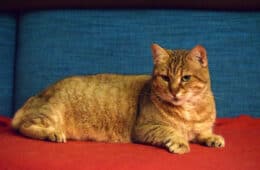
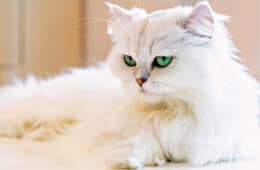
8 comments on “Turkish Angora Cats – Details About The Breed”